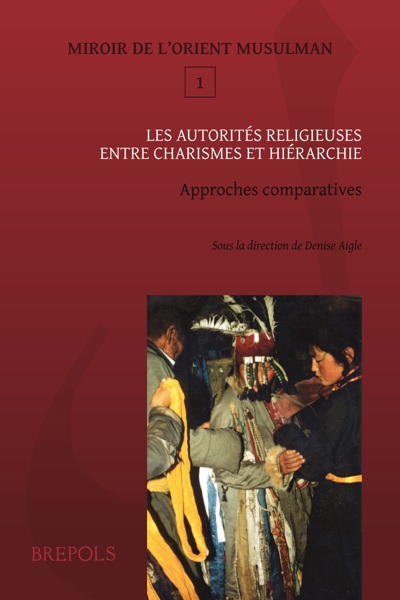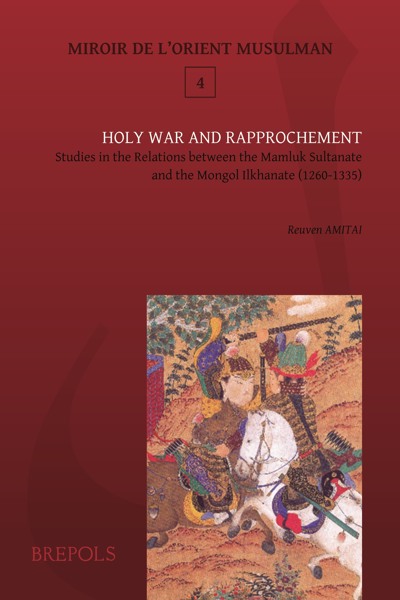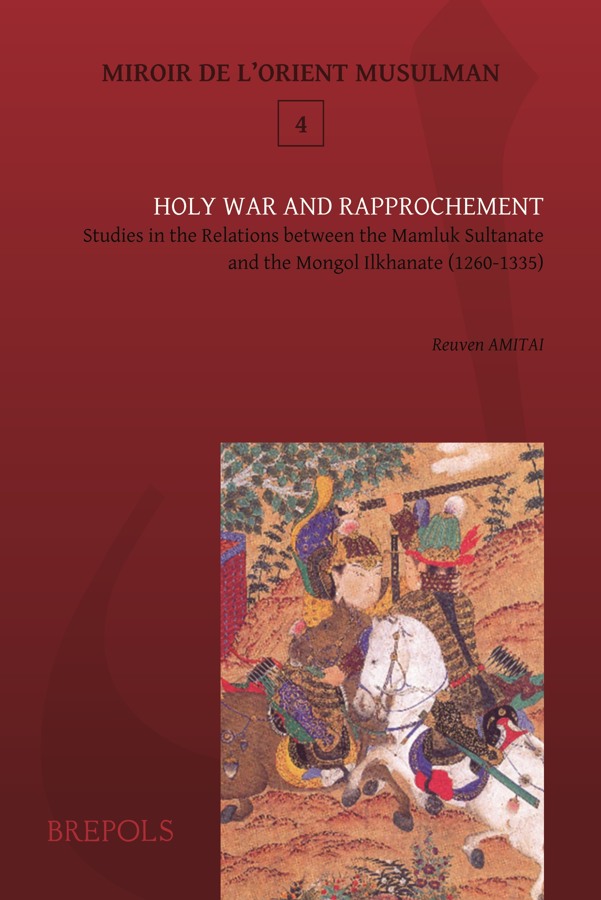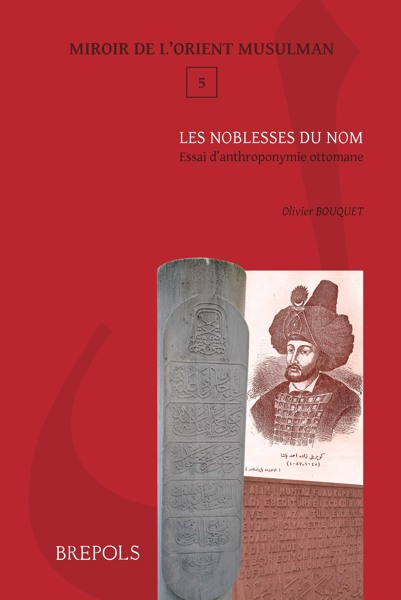
Holy War and Rapprochement
Studies in the Relations between the Mamluk Sultanate and the Mongol Ilkhanate (1260-1335)
R. Amitai
- Pages: 149 p.
- Size:156 x 234 mm
- Language(s):English
- Publication Year:2013
- € 50,00 EXCL. VAT RETAIL PRICE
- ISBN: 978-2-503-53152-6
- Paperback
- Available
- € 50,00 EXCL. VAT RETAIL PRICE
- ISBN: 978-2-503-55849-3
- E-book
- Available
This book argues that the relations between the Mamluk Sultanate of Syria and Egypt and the Ilkhanate, the Mongol state in Iran and the surrounding countries, were of a military, political-diplomatic, social and cultural nature.
"Readers interested in military and political history of this period will find Holy War and Rapprochement enlightening and, in view of its consequences on the current Middle East, extremely important." (Thomas Zacharis, in: Military History, July 2015)
"Reuven Amitai hat alles in allem eine ausgezeichnete Synthese seiner im Laufe von vielen Jahren gewonnenen Expertise zu den mamlukisch-ilkhanidischen Beziehungen vorgelegt, die viele Leser verdient!" (Stephan Conermann, in: Sehepunkte 14 (2014), Nr. 9 [15.09.2014], URL: http://www.sehepunkte.de/2014/09/19273.html)
"En suma, el estudio responde con capacidad a la elaboración de un análisis político-religioso sobre uno de los aspectos más notorios de la política oriental del siglo XIII-XIV, y es al mismo tiempo, una obra sustancial para observar con detenimiento aquellos fenómenos que numerosos historiadores han denominado como la Crusade Mongol y la Guerra Santa en Asia." (Daniel González Palma, in Medievalia, 18/1, 2015, p. 238-240)
“Reuven Amitai has, without doubt, become the leading expert in this particular field (…) Overall, this is a well-written book with a balanced use of direct quotes from a variety original sources and it is fully referenced (…) As for its academic contribution, a new book on the subject is always welcome (…) Amitai makes an important update to research in this field and adds new insights into some of the ideas about Mongol–Mamluk relations as a crucial defining point in the history of the Middle East from the 13th century onwards.” (Bruno De Nicola, dans le Bulletin critique des Annales islamologiques, 30, 2014, p. 85)
« Ce nouvel ouvrage, ajouté à longue liste des travaux sur le conflit Mamlouks-Mongols de Reuven Amitai, fait de ce dernier, incontestablement, l’un des grands spécialistes de la question. Son érudition et son attention constante aux débats de la recherche contemporaine dans cette étude, et celles antérieures, fait que son ouvrage est déjà important et deviendra, à n’en point en douter, un classique des études sur le conflit Mamlouks-Mongols des viie/xiiie et viiie/xive siècles. » (Mehdi Berriah, dans: Revue des mondes musulmans et de la Méditerranée, n° 142, déc. 2017)
The sixty year struggle (1260-1320) between the Mamluk Sultanate of Syria and Egypt and the Ilkhanate, the Mongol realm in Iran and the surrounding countries, had a profound impact on the region’s ruling elites and the general population, as well as on neighboring countries and beyond. It is possible to speak of a thirteenth century “world war”: on one side were arrayed the Mamluks and the Mongol Golden Horde of southern Russia, at times Genoa and the Byzantine empire, while on the other side we find the Ilkhanate, the Venetians (albeit still trading with the Mamluks), the states of western Europe, the Papacy, the Armenians of both the Caucasus and Cilicia, and Georgia. To these we could add minor, but still important actors: the Bedouin of Syria, the Seljuqs of Rum (Anatolia), the Turcoman of that country, and even more. Far away, the Mongols of Central Asia and the Great Khan in China also had an impact on affairs along the Mediterranean coast and southwest Asia.
The present volume is based on four lectures given at the Ecole Pratique des Hautes Etudes in Paris in February 2007, and first provides an overview of the military struggle between these two regional powers, continues with a detailed discussion of the ideological posturing and sparring between them – both before and after the conversion of the Mongols to Islam in the 1290s, and finally reviews and compares how the Mamluks and Mongols presented themselves to the local, mainly Muslim, populations that they ruled. The book provides an analysis of an important chapter in Middle Eastern, Asian and world history.
Reuven Amitai holds the Eliyahu Elath Chair for Muslim History at the Hebrew University of Jerusalem, where he is now the dean of the Faculty of Humanities. His publications include Mongols and Mamluks: The Mamluk-Ilkhanid War, 1260-1281 (Cambridge, 1995) and The Mongols in the Islamic Lands: Studies in the History of the Ilkhanate (Aldershot, 2007).




